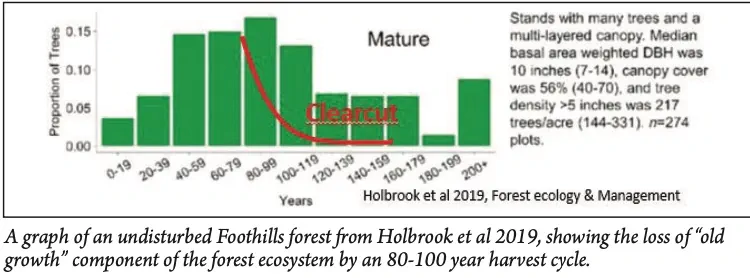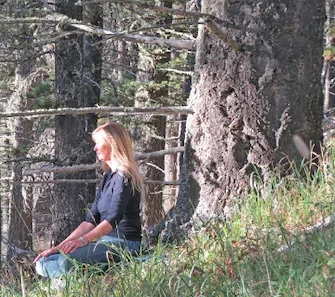BCEC: WHY PROTECT OLD GROWTH REFUGIA IN OUR AREA?
The Canadian Constitution Act of 1867 vests “the management of public lands… and sale of timber and wood thereon” to provinces in section 92 of that document. Alberta’s Forest Reserves Act was established in 1942. It has been modified since especially in 2021. However, as the Environmental Law Centre noted those changes did not alter “The primary focus of Alberta’s forest laws and policies remain managing forests to achieve a sustainable timber yield.”
The science of Forestry is concerned with harvesting trees for timber and paper which we all recognize society currently needs. The view of our forests primarily for resource extraction predominates our provincial viewpoint. Tree harvest in Alberta for 2022 totaled $9Bn of which $5.7Bn was export revenue with 82% going to the US. Our viewpoint needs to change. Forest Ecologists provide evidence our harvest rate is unsustainable and significantly degrades our landscape’s ability to provide other values like water and clean air and mitigate climate change.
Forest ecologists want to manage forests for ecological integrity which is maintaining viable populations…and protecting the evolutionary potential of species and ecosystems that deliver these services. This wider view of the value of forests is called Ecosystem-based Management.
Foresters consider harvesting “sustainable” when trees reach an age of 80-100 years. This is because the “biomass” growth curve for forests flattens at this age as a forest develops fewer, but larger trees with age. Cutting before this inflection has been shown to provide maximum value for forestry corporations (Loehle, 2023).

An 80 year cutting rotation removes the whole old growth ecosystem and the animals, moisture retention, subsurface fungal networks and successful genes it provides for forest regeneration. Animals that rely on old growth forests are pileated woodpeckers, black bears, flying squirrels, martens and fishers.
The loss of this part of our forest ecosystem in the Foothills, where 20-30% of trees in an undisturbed forest are older than 150 years, has consequences that take centuries to restore and are only beginning to be understood. For example the positive effect of mature trees on the ability of creek watersheds to deliver year round flows to rivers, which has been studied and reported by Forest Hydrologist Dr. Younes Alilla at the University of British Columbia.

The Bragg Creek Environmental Coalition is identifying and mapping Old Growth Refugia in the west Bragg Creek Trails area that is scheduled to be clearcut by West Fraser Timber in 2026. Old Growth Refugia are groves of large trees whose diameter exceeds 75cm (30 in). We have determined an age verses radius relationship for trees in the Trails area using ring counts from sawn trees encountered in trails maintenance. Trees of that diameter, mostly White Spruce and Lodgepole Pine, are in the 200-225 year age range. While there is no agreement on definition of old growth forests in the forestry and forest ecology scientific literature, researchers do agree that age is a key component of any definition. These 200+ year old groves have survived wildfires in 1840,1863, 1876, 1889, 1893, and 1910 as mapped by Dr Marie-Pierre Rogeau of the University of Alberta. Hence the term “refugia”.
In addition to trying to save Old Growth Refugia from the 2026 East Kananaskis clear cut logging, the Bragg Creek Environmental Coalition is trying to identify similar tree groves elsewhere in the greater Bragg Creek area. Saving these diverse genetic reservoirs to regenerate trees and their fungal networks will enable our forests to adapt to our changing climate and maintain forests in the Elbow River watershed for future generations.

To help in this citizen science project, BCEC is holding a family-oriented contest where local retailers provide gifts for each family that identifies one of the largest Lodgepole Pine, White Spruce, Douglas Fir, Trembling Aspen and Balsam Poplar within 12 Kilometres of the Cinnamon Spoon Café. Details of the contest will be listed on our website www.braggcreekenvironmentalcoalition.com.

























